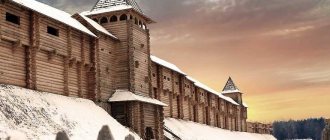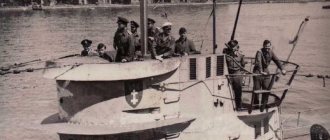1) Choose your building site carefully
It is extremely important to build your castle on high ground and at a strategic point.
Castles were usually built on natural elevations, and were usually equipped with a link connecting them with the external environment, such as a ford, bridge or passage.
Historians have rarely been able to find evidence from contemporaries regarding the choice of location for the construction of the castle, but they still exist. On September 30, 1223, 15-year-old King Henry III arrived in Montgomery with his army. The king, who had successfully carried out a military campaign against the Welsh prince Llywelyn ap Iorwerth, was planning to build a new castle in this area to ensure security on the border of his possessions. The English carpenters had been given the task of preparing the wood a month earlier, but the king's advisers had only now determined the site for the construction of the castle.
Montgomery Castle, when it began to be built in 1223, was located on a hill
After a careful survey of the area, they chose a point on the very edge of a ledge overlooking the Severn valley. According to the chronicler Roger of Wendover, this position "looked unassailable to anyone." He also noted that the castle was created “for the security of the region from frequent attacks by the Welsh.”
Advice
: Identify areas where the topography rises above traffic routes: these are natural locations for castles. Keep in mind that the design of the castle is determined by where it is built. For example, a castle will have a dry moat on a ledge of outcroppings.
Prague Castle
What's the point of traveling around the Czech Republic without visiting at least one castle? Prague Castle is one of the oldest 9th century strongholds to ever come into existence and is listed in the Guinness Book of Records as the largest ancient fortress. An insane 560 meters long, making it the tallest castle on this list! Tours of the castle are available all year round.
Tourists can explore the 1999 Orangerie, a glass-enclosed conservatory housing a garden of tropical plants, and St. Vitus Cathedral, which houses ancient relics dating back even further to the Middle Ages. However, forget about taking a look at the Crown Jewels. They are heavily guarded!
2) Come up with a workable plan
You will need a master mason who can draw plans.
An engineer knowledgeable in weapons will also come in handy. Experienced soldiers may have their own ideas about the design of the castle, in terms of the shape of its buildings and their location. But it is unlikely that they will have the knowledge of specialists in design and construction.
To implement the idea, a master mason was required - an experienced builder, whose distinguishing feature was the ability to draw a plan. With an understanding of practical geometry, he used simple tools such as ruler, square and compass to create architectural plans. Master masons submitted a drawing with a building plan for approval, and during construction they supervised its construction.
When Edward II ordered the construction of the tower at Knaresborough, he personally approved the plans and demanded reports on the construction.
When Edward II in 1307 began building a huge residential tower at Knaresborough Castle in Yorkshire for his favorite Piers Gaveston, he not only personally approved the plan created by the London master - mason Hugh Tichmarshevsky - probably made in the form of a drawing - but also required regular reports on the construction. From the mid-16th century, a new group of professionals called engineers increasingly began to take on a role in drawing up plans and constructing fortifications. They had technical knowledge of the use and power of cannons, both for defense and attack on castles.
Advice
: Plan loopholes to provide a wide angle of attack. Shape them according to the weapon you're using: longbow archers need larger slopes, crossbowmen need smaller ones.
3) Hire a large group of experienced workers
You will need thousands of people.
And not all of them will necessarily come of their own free will. The construction of the castle required enormous efforts. We have no documentary evidence of the construction of the first castles in England from 1066, but from the scale of many castles of that period it is clear why some chronicles claim that the English were under pressure to build castles for their Norman conquerors. But from the later Middle Ages, some estimates with detailed information have reached us.
During the invasion of Wales in 1277, King Edward I began building a castle at Flint, north-east Wales. It was erected quickly, thanks to the rich resources of the crown. A month after the start of work, in August, 2,300 people were involved in the construction, including 1,270 diggers, 320 woodcutters, 330 carpenters, 200 masons, 12 blacksmiths and 10 charcoal burners. All of them were driven from the surrounding lands under an armed escort, who made sure that they did not desert from the construction site.
From time to time, foreign specialists could be involved in construction. For example, millions of bricks for the reconstruction of Tattershall Castle in Lincolnshire in the 1440s were supplied by a certain Baldwin “Docheman”, or Dutchman, that is, “Dutchman” - obviously a foreigner.
Advice
: Depending on the size of the workforce and the distance they have to travel, they may need to be housed on site.
4) Ensure the safety of the construction site
An unfinished castle on enemy territory is very vulnerable to attack.
To build a castle on enemy territory, you need to protect the construction site from attacks. For example, you can surround the construction site with wooden fortifications or a low stone wall. Such medieval defense systems sometimes remained after the construction of the building as an additional wall - as, for example, at Beaumaris Castle, the construction of which began in 1295.
Beaumaris (English: Beaumaris, Welsh: Biwmares) is a town on the island of Anglesey, Wales.
Safe communication with the outside world for the delivery of building materials and supplies is also important. In 1277 Edward I dug a canal to the River Clwyd straight from the sea to the site of his new castle at Rydlan. The outer wall, built to protect the construction site, extended to the piers on the banks of the river.
Rydland Castle
Security problems can also arise when radically renovating an existing castle. When Henry II rebuilt Dover Castle in the 1180s, the work was carefully planned so that the fortifications would provide protection for the duration of the renovation. According to the surviving decrees, work on the inner wall of the castle began only when the tower was already sufficiently repaired so that guards could be on duty in it.
Advice
: building materials for building a castle are large and voluminous. If possible, it is better to transport them by water, even if this means building a dock or canal.
MEHRANGARH FORT
Where: India, Jodhpur
Total area: 81,227 sq. m
Photo: pixabay.com
The Mehrangarh fortress seems to grow from the steep rocks of Marwar and rises at a level of 122 meters. The massive walls of the fort are 21 meters wide and 36 meters high. The fort was built in 1459 in the Jodhpur region by ruler Rao Jodha. However, most of the fort's structures date back to the 17th century.
Today, the fort is home to several palaces: the Pearl Palace, the Palace of Pleasures and the Palace of Flowers, as well as court buildings and apartments. The top point of the fort offers a breathtaking panoramic view of the city and the surrounding area, and to get to the foot of the fortress, you need to overcome a 5-kilometer mountain road.
The Mehrangarh Museum is an example of Rajput architecture: picturesque courtyards, luxurious halls, decorated with carvings and wall paintings. In the museum's exhibitions you can see a golden throne, the best collection of elephant seats in India, manuscripts, headdresses and ancient weapons from the Mughal dynasty. The wall paintings, which were created over 10 years, are made using an interesting technique - using gold leaf, glue and... cow urine.
The fort is popular with Hollywood directors and is often the location for filming high-grossing films such as Batman. For tourists, photo and video shooting in the fort premises is paid - about 100 rupees.
And before we move on to the first place in our ranking of the largest foreign fortresses, watch a fascinating video about the silver medalist:
5) Prepare the landscape
When building a castle, you may have to move a significant amount of earth, which is not cheap.
It is often forgotten that the castle’s fortifications were built not only through architectural techniques, but also through landscape design. Huge resources were devoted to moving land. The scale of the Norman land work can be considered outstanding. For example, according to some estimates, the embankment built around Pleshy Castle in Essex in 1100 required 24,000 man-days.
Some aspects of landscaping required serious skill, especially the creation of water ditches. When Edward I rebuilt the Tower of London in the 1270s, he hired a foreign specialist, Walter of Flanders, to create a huge tidal ditch. Digging the ditches under his direction cost £4,000, a staggering sum, almost a quarter of the cost of the entire project.
An 18th-century engraving of the 1597 plan of the Tower of London shows how much earth had to be moved to build the moats and ramparts.
With the increasing role of cannons in siege art, the earth began to play an even more important role as an absorber of cannon shots. Interestingly, experience in moving large volumes of earth allowed some fortification engineers to find work as garden designers.
Advice
: Reduce time and cost by excavating the stonework for your castle walls from the moats around it.
6) Lay the foundation
Carefully implement the mason's plan.
Using ropes of the required length and pegs, it was possible to mark the foundation of the building on the ground in full size. After the ditches for the foundation were dug, work began on the masonry. To save money, responsibility for construction was assigned to the senior mason instead of the master mason. Masonry in the Middle Ages was usually measured in rods, one English rod = 5.03 m. At Warkworth in Northumberland, one of the complex towers stands on a grid of rods, perhaps for the purpose of calculating construction costs.
Warkworth Castle
Often the construction of medieval castles was accompanied by detailed documentation. In 1441-42 the tower of Tutbury Castle in Staffordshire was destroyed and plans were drawn up for its successor on the ground. But for some reason the Prince of Stafford was dissatisfied. The king's master mason, Robert of Westerley, was sent to Tutbury where he held a meeting with two senior masons to design a new tower on a new site. Westerly then left, and over the next eight years a small group of workers, including four junior masons, built a new tower.
Senior masons could be called upon to certify the quality of the work, as was the case at Cooling Castle in Kent when the royal mason Heinrich Yewel assessed the work carried out from 1381 to 1384. He criticized deviations from the original plan and rounded down the estimate.
Advice
: Don't let the master mason fool you. Make him make a plan so that it is easy to make an estimate.
Projects of mansions in the castle style
| Fortress project No. 39-08 | Palace project No. 33-19 |
The photo from the catalog shows different solutions. Among the castle style projects there are buildings like a medieval fortress, and there are houses and cottages that are more reminiscent of a palace, for example, project No. 33–19. This is a large house with a light plastered facade, balconies and a terrace.
All our projects contain a full package of documentation necessary for construction: floor plans, masonry diagrams, sections of the roof and foundation. A specification of materials is attached to it, and using a special order form you can calculate an estimate.
7) Strengthen your castle
Complete the construction with complex fortifications and specialized wooden structures.
Until the 12th century, the fortifications of most castles consisted of earth and logs. And although later preference was given to stone buildings, wood remained a very important material in medieval wars and fortifications.
Stone castles were prepared for attacks by adding special battle galleries along the walls, as well as shutters that could be used to cover the gaps between the battlements to protect the castle defenders. All this was made of wood. Heavy weapons used to defend the castle, catapults and heavy crossbows, springalds, were also built from wood. Artillery was usually designed by a highly paid professional carpenter, sometimes with the title of engineer, from the Latin "ingeniator".
Storming of the castle, drawing from the 15th century
Such experts were not cheap, but could end up being worth their weight in gold. This, for example, happened in 1266, when the castle of Kenilworth in Warwickshire resisted Henry III for almost six months with the help of catapults and water defense.
There are records of marching castles made entirely of wood - they could be carried with you and erected as needed. One of these was built for the French invasion of England in 1386, but the garrison of Calais captured it along with the ship. It was described as consisting of a wall of logs 20 feet high and 3,000 steps long. There was a 30-foot tower every 12 paces, capable of housing up to 10 soldiers, and the castle also had unspecified defenses for archers.
Advice
: Oak wood becomes stronger over the years, and it is easiest to work with when it is green. The upper branches of trees are easy to transport and shape.
Aleppo Citadel
Dover Castle may have been the first to feature innovative walls used to keep out invaders, but Aleppo Citadel brings more to the table. This 30-meter high castle is not only filled with decades of ancient history dating back to ancient Syria, but it also offers a strange history. Like many of the castles already listed, the Aleppo Citadel was captured by enemies and also damaged by natural disasters such as earthquakes.
Researchers even unearthed the remains of an ancient Bronze Age temple that retold the belief systems of gods, goddesses and mythological monsters along the walls. Now that the Aleppo Citadel has become a Middle Eastern monument, it remains an important part of Syrian history.
 Provide water and sewerage
Provide water and sewerage
Don't forget about the "conveniences".
You will appreciate them in the event of a siege. The most important aspect for the castle was efficient access to water. These could be wells that supplied water to certain buildings, for example, a kitchen or stable. Without a detailed knowledge of medieval well shafts, it is difficult to do them justice. For example, at Beeston Castle in Cheshire there is a well 100 m deep, the top 60 m of which is lined with cut stone.
There is some evidence of complex aqueducts that brought water to the apartments. The tower of Dover Castle has a system of lead pipes that delivers water to the rooms. It was fed from a well using a winch, and possibly from a rainwater collection system.
Effective disposal of human waste was another challenge for lock designers. Latrines were collected in one place in the buildings so that their shafts were emptied in one place. They were located in short corridors that trapped unpleasant odors, and were often equipped with wooden seats and removable covers.
Reflection room at Chipchase Castle
Today, it is widely believed that restrooms used to be called “wardrobes.” In fact, the vocabulary for toilets was extensive and colorful. They were called gongs or gangs (from the Anglo-Saxon word for "place to go"), nooks and jakes (the French version of "john").
Advice
: Ask a master mason to design comfortable and private latrines outside the bedroom, following the example of Henry II and Dover Castle.










